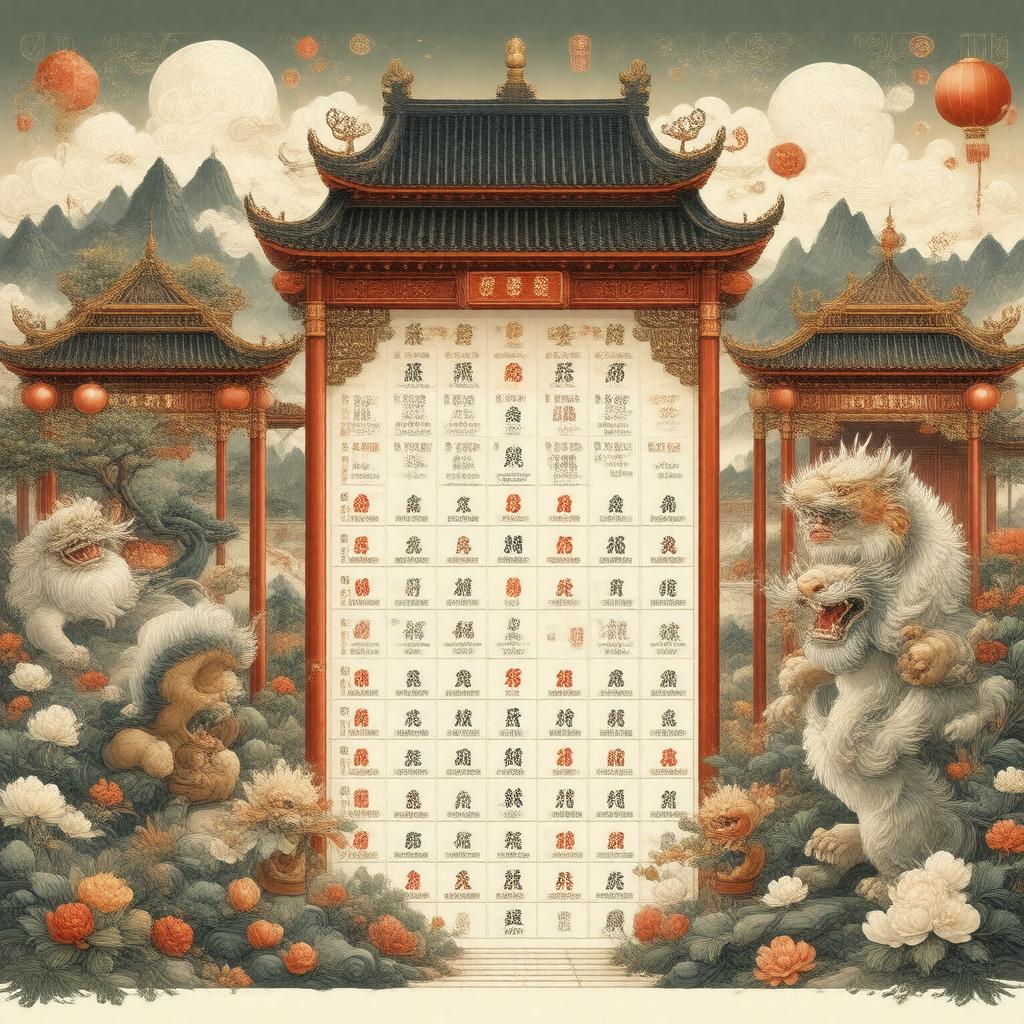Prompt
Create an image of a traditional Chinese calendar, showcasing its intricate design and cultural significance, with elements such as the 12-year animal cycle, Heavenly Stems, and Earthly Branches, surrounded by symbols of good fortune and prosperity, set against a backdrop of a bustling Chinese festival or a serene natural landscape, incorporating vibrant colors and ornate details characteristic of Chinese art and culture.

